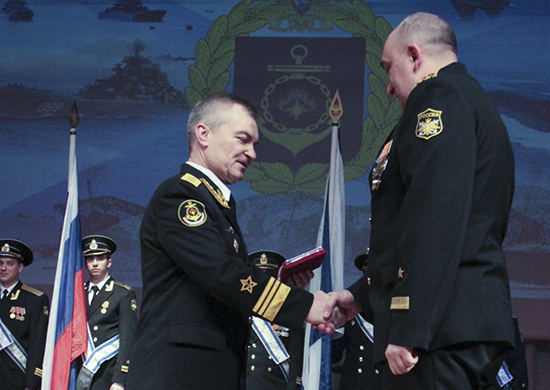News
California’s Largest Dam Removal Project: A Step Towards Nature’s Rebound

In the picturesque region of Hornbrook, California, a significant environmental transformation is underway. By this time next year, a series of colossal dams that have long obstructed the Klamath River will be a thing of the past. These dams, which have been in place since the 1950s, will be dismantled, allowing the river to reclaim its natural course.
The Iron Gate Dam, inaugurated in 1964, stands as the last of four dams that have regulated the Klamath River’s flow and managed the local water supply in Northern California. This dam, towering at nearly 200 feet, is now at the forefront of the world’s largest dam removal and river restoration project. The decommissioning process has already begun with the removal of one of the dams, Copco2, earlier this year. This removal was executed in a matter of months, a swift accomplishment considering the construction of the Iron Gate Dam spanned almost a decade.
Mark Bransom, the CEO of the Klamath River Renewal Corporation, emphasized the project’s goal to let the river flow freely once the dam infrastructure is dismantled. Plans are in place to assist nature in reclaiming the area. Bransom stated, “As soon as the reservoir is drained, we’ll get out on the footprint there and begin some initial restoration activity. We want to stabilize the remaining sediments using native vegetation.”
In the face of escalating climate challenges, including extreme heat, unprecedented droughts, and devastating floods, there’s a growing national movement to “rewild.” This initiative aims to restore natural environments, potentially mitigating the adverse effects of climate change. Dams, many of which were erected during an era when infrastructure development overshadowed environmental concerns, are central to this rewilding effort. Ann Willis, the California regional director for American Rivers, a nonprofit dedicated to safeguarding clean water, remarked, “One of the fastest ways to heal a river is to remove a dam.”
The U.S. Army Corps of Engineers has identified a staggering 76% of existing U.S. dams as having “high hazard potential.” This designation indicates that any failure or mismanagement of these dams could result in significant property destruction and loss of human life. The Iron Gate Dam, for instance, has been plagued by issues like toxic algae blooms, posing risks to the water supply.
Tribal activists along the Klamath River have been at the forefront of the push for dam decommissioning for over two decades. They’ve highlighted the detrimental impacts of these dams, most notably the near-extinction of salmon in the river. This decline has severely affected the sacred salmon ceremonies of the Karuk, Yurok, and Hoopa tribes.
Barry McCovey Jr., the director of the Yurok Tribe Fisheries Department, expressed his enthusiasm for the dam removal, viewing it as a monumental step towards restoring ecological balance. However, he also cautioned that the full impact might take time to materialize.
The dam removal project, with a price tag of $500 million, has been met with mixed reactions from local communities. While some homeowners are concerned about potential decreases in property values, environmentalists, the Renewal Corporation, and tribes believe the cost is a worthy investment to restore nature to its original state.
The success of the Elwha Dam Removal project in Washington state in 2011 serves as a beacon of hope for the Klamath River project. The Elwha Dam removal revitalized the river’s natural flow, leading to the swift return of salmon and the rejuvenation of a beach and lagoon.
As the Klamath River project progresses, environmental advocates are setting their sights on even more ambitious endeavors, such as the proposed $33.5 billion federal initiative to breach four dams on the lower Snake River in eastern Washington.

Entertainment
Sir Michael Gambon, Renowned ‘Harry Potter’ Actor, Passes Away at 82

Sir Michael Gambon, celebrated for his portrayal of Professor Albus Dumbledore in the Harry Potter film series, has passed away at the age of 82, according to a statement from his family.
Born in Dublin and later becoming a British citizen, Gambon’s illustrious career spanned six decades, encompassing television, film, theatre, and radio. Over the years, he garnered four BAFTA awards and was knighted in 1998 for his contributions to the entertainment industry.
His family shared that the esteemed actor passed away peacefully in a hospital, surrounded by loved ones, after suffering from pneumonia.
Gambon’s journey into the limelight began with a stage performance in Dublin’s production of Othello in 1962. His career trajectory soared when he joined Laurence Olivier’s National Theatre acting company in London, eventually winning three Olivier awards for his roles in the company’s productions.
Beyond his iconic role as Dumbledore, which he assumed after the passing of Richard Harris in 2003, Gambon was recognized for his roles in ITV’s Maigret series, BBC’s The Singing Detective, and films like Gosford Park and The King’s Speech.
Fellow Harry Potter co-star, Fiona Shaw, remembered him as a “magnificent trickster” with unparalleled skill in handling text. Jason Isaacs, who played Lucius Malfoy, recalled Gambon’s “fearless, filthy sense of fun” and his profound impact on Isaacs’ understanding of acting.
Dame Eileen Atkins, a close friend of Gambon, reminisced about his commanding stage presence and his gentle nature, stating, “There was something incredibly sweet inside Michael.”
Gambon’s final stage appearance was in 2012 in a London rendition of Samuel Beckett’s All That Fall.
Tributes have poured in from across the entertainment world, with the Irish Prime Minister, Leo Varadkar, lauding him as a “great actor” who gave his all, whether in Beckett, Dennis Potter, or Harry Potter.
News
Russia Releases Footage of Viktor Sokolov Following Ukraine’s Strike Claims

In a recent development, Russia’s defence ministry has released footage purportedly showing Viktor Sokolov, the commander of the Black Sea Fleet, attending a conference. This comes after Ukraine’s claims on Monday that Admiral Sokolov, along with 33 other officers, had been killed in a missile strike on the fleet’s headquarters in Sevastopol, Crimea.
The video, aired on a TV channel run by Russia’s defence ministry, displays Adm Sokolov participating in a video link with Defence Minister Sergey Shoygu and other senior officials. The ministry asserts that this meeting took place on Tuesday. However, the exact date of the footage remains unverified.
Ukraine’s initial claims about the missile strike suggested a significant blow to the Russian navy. However, following the release of the video by Russia, Ukraine appears to be reassessing its stance. While Kyiv has not directly named Adm Sokolov in its claims, it now cites “open sources” for its assertion that the commander was among the 34 casualties. This shift in narrative indicates a potential recalibration in Ukraine’s information dissemination strategy.
The video, which spans eight minutes, showcases a Defence Ministry collegium, allegedly conducted on Tuesday morning. Defence Minister Sergey Shoygu is observed conversing with top officials in a Moscow conference room. The commanders of Russia’s five fleets, including the Black Sea Fleet, are visible on video links, though none provide any commentary.
Facial recognition software has identified a match between previous images of Adm Sokolov and the individual in the recent video, suggesting its authenticity. However, the BBC has yet to confirm the actual date of the meeting and the real-time presence of Adm Sokolov in the video link.
Last Friday, Ukraine announced a strike on the headquarters of the Black Sea Fleet, a significant component of the Russian navy and a symbolic representation of Russia’s long-standing military influence in the region. Social media footage from the incident depicted smoke billowing over the building. Russia countered this claim, stating it had intercepted five missiles, with one serviceman reported missing post-attack.
Ukrainian forces have consistently launched strikes against Russian bases in Crimea. The Black Sea fleet, besides being a strategic point for assaults on Ukraine, symbolizes Russia’s historic military dominance in the area. Notably, the fleet was stationed in Crimea under a lease agreement even before Russia’s controversial annexation of the peninsula in 2014.
News
Nagorno-Karabakh Announces Dissolution Amidst Tensions with Azerbaijan

Nagorno-Karabakh, an internationally unrecognized republic, has declared its dissolution effective January 1, 2024. Following a defeat by pro-Armenian forces against Azerbaijan, Nagorno-Karabakh’s government announced the termination of all its “state institutions and organizations,” effectively ceasing its existence.
The decision, signed by Prime Minister Samwel Shakhramanjan, was made in light of the severe political and military situation, aiming to protect the safety and lives of the Nagorno-Karabakh population. The dissolution was a part of the terms of surrender.
Nagorno-Karabakh, while legally a part of Azerbaijan, has a predominantly Armenian population. The region has been a point of contention between Azerbaijan and Armenia for years. A significant military offensive by Azerbaijan on September 19 led to the rapid defeat of pro-Armenian forces in Nagorno-Karabakh. This resulted in a mass exodus, with over 65,000 people, more than half of Nagorno-Karabakh’s population, fleeing to Armenia. Experts anticipate that nearly all Armenians living in Nagorno-Karabakh will leave the region, which had a recent population of 120,000.
Following the dissolution, residents will need to familiarize themselves with Azerbaijan’s laws regarding the region’s integration, allowing them to decide if they wish to return.
Meanwhile, satellite images reveal long traffic jams along the Latshin Corridor, the sole route from the remote mountainous region to Armenia. The Azerbaijani military, which had previously blocked the corridor, causing a humanitarian crisis in Nagorno-Karabakh, has now opened it for Armenians’ departure, albeit under strict surveillance. Notably, Azerbaijani authorities arrested Nagorno-Karabakh’s former Prime Minister, Ruben Wardanyan, at the border crossing. Azerbaijani media report that Wardanyan, once a businessman active in Russia, is now accused of financing terrorism among other charges.
-

 News2 years ago
News2 years agoHuawei’s Bold Move into AI: A New Era or Another Controversy?
-

 Lifestyle2 years ago
Lifestyle2 years agoApple’s Vision Pro: Setting New Standards in VR and AR Technology
-

 Tech2 years ago
Tech2 years agoThe Horizon of Innovation: The 10 Most Promising Future Technologies Shaping Our Tomorrow
-

 News2 years ago
News2 years agoTragic Bus Crash in New York Claims Two Lives; Multiple Students Injured
-

 News2 years ago
News2 years agoEscalation in Ukraine-Russia Conflict: Missile Strikes Target Key Installations in Crimea
-

 Politics2 years ago
Politics2 years agoPoland Halts Arms Shipments to Ukraine Amid Rising Tensions Over Grain Ban
-

 News2 years ago
News2 years agoHouse GOP Faces Deep Divisions Over Government Funding Ahead of Deadline
-

 Health2 years ago
Health2 years agoThe Placebo Effect: A Double-Edged Sword in Modern Medicine